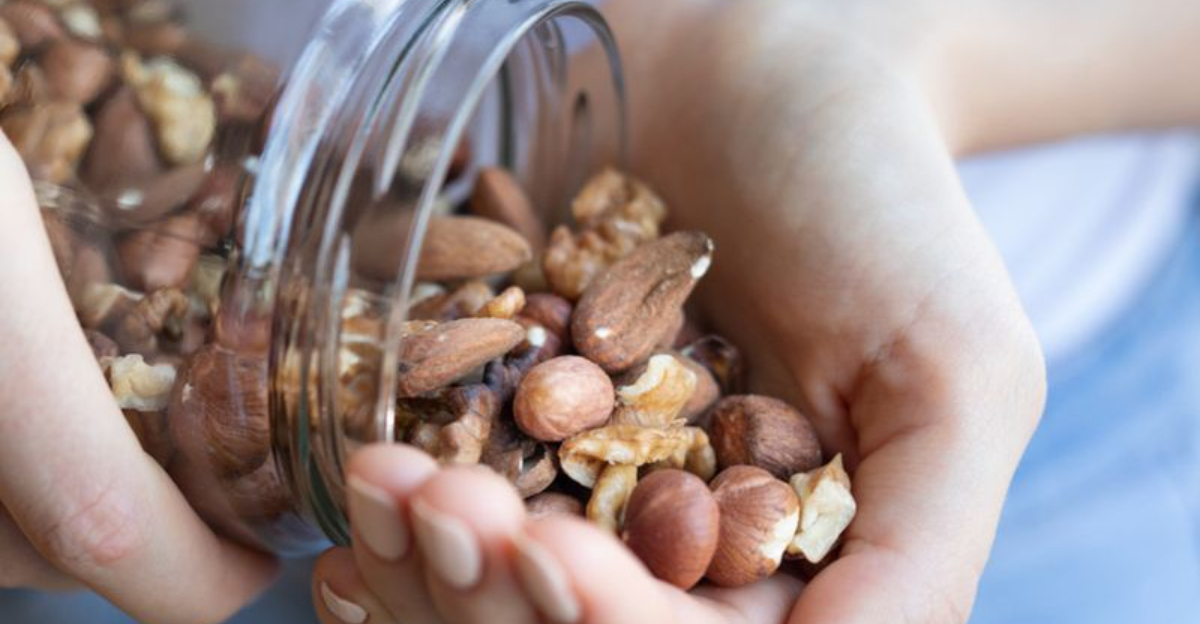14 Mistakes People Make When Cooking With Nuts

Nuts might seem like a simple ingredient, but they can turn on you fast if you’re not careful. One wrong move and you’ve gone from rich and toasty to bitter and burnt.
Whether you’re tossing them in a salad, blending them into sauces, or baking them into treats, there’s an art to getting it right.
Avoiding a few common slip-ups can make all the difference between a nutty masterpiece and a kitchen disappointment.
1. Using Rancid Nuts
Sniff before you cook! Rancid nuts have a paint-like, bitter smell that’s a dead giveaway they’ve gone bad. The oils in nuts go rancid quickly, especially when exposed to heat and light.
Once those oils oxidize, no amount of toasting or seasoning will save them. Your entire dish will have that funky flavor. Always perform the nose test before adding nuts to your recipe.
2. Skipping the Toasting Step
Raw nuts are like shy performers waiting in the wings! Toasting awakens their essential oils and transforms their flavor profile completely.
difference between a raw walnut and a toasted one is like night and day. A quick 8-10 minutes in a 350°F oven brings out nutty, caramelized notes that elevate your entire dish.
Never skip this crucial step, even if your recipe doesn’t explicitly call for it.
3. Burning Your Precious Nuts
One minute they’re perfect, the next they’re charcoal! Nuts contain high levels of oil that make them toast quickly but burn even faster.
The line between beautifully golden and bitterly burnt is razor-thin. Never walk away during toasting.
Shake the pan frequently or stir nuts on a baking sheet halfway through. Remember they continue cooking from residual heat after removal, so pull them slightly before they look done.
4. Adding Nuts Too Early in the Cooking Process
Timing is everything! Tossing nuts into your stir-fry or curry at the beginning guarantees soggy, soft disappointment. Nuts should maintain their delightful crunch as a textural contrast to other ingredients.
For most cooked dishes, add them in the final few minutes. In baked goods like cookies or brownies, fold them in last to prevent them from sinking to the bottom.
Your taste buds will thank you for that perfect textural pop.
5. Using Whole Nuts When Chopped Would Be Better
Size matters when it comes to nuts in recipes! Biting into a whole walnut in your brownie can be jarring when smaller pieces would distribute flavor more evenly.
Large nuts often sink to the bottom of batters or create uneven texture. Consider how the nuts will interact with other ingredients.
Chunky pesto needs roughly chopped pine nuts, while smooth hummus benefits from finely processed ones. Match your nut size to your dish’s texture goals.
6. Storing Nuts Improperly
The pantry is nut purgatory! Those expensive pine nuts you splurged on deserve better than a warm cupboard. Nuts contain delicate oils that deteriorate quickly at room temperature.
Store them in airtight containers in the refrigerator for up to six months or freezer for up to a year.
This simple step prevents rancidity and preserves their fresh flavor. Label containers with purchase dates to track freshness.
7. Forgetting to Shell Nuts Completely
Nothing ruins a perfect bite like unexpected crunch from lingering shell fragments! Those tiny pieces of pecan shells or almond skins can cause serious dental damage or simply ruin the eating experience.
When using freshly shelled nuts, inspect them carefully under good lighting. For pre-shelled varieties, still give them a quick once-over.
Particularly with pistachios and walnuts, those stubborn shell bits love to hide in crevices.
8. Going Overboard with Quantity
More isn’t always merrier! Doubling the walnuts in your banana bread might seem like a good idea until they overwhelm every bite.
Nuts should complement, not dominate your dishes. They’re also calorie-dense and expensive. Follow recipe measurements initially, then adjust in future batches if needed.
Remember that toasting intensifies flavor, so you might need fewer nuts than you think to achieve that perfect nutty essence.
9. Overlooking Nut Size Consistency
Chopping nuts haphazardly creates cooking chaos! Inconsistent pieces cook unevenly – smaller bits burn while larger chunks remain raw.
In baked goods, this creates texture inconsistency that ruins the eating experience. Take time to chop methodically or pulse carefully in a food processor.
For even more precision, sieve your chopped nuts to separate different sizes. This simple step ensures every nutty bite delivers the same delightful flavor and texture.
10. Neglecting to Season Your Nuts
Plain nuts are missing their potential! Even a light sprinkle of salt transforms nuts from bland to addictive. For nuts used as garnishes or snacks, proper seasoning is non-negotiable.
Try tossing warm toasted nuts with olive oil and flaky sea salt. Or experiment with spice blends like cinnamon-sugar, curry powder, or smoked paprika.
Season immediately after toasting while they’re still hot so the flavors adhere better.
11. Pulverizing Nuts to Dust
The food processor is not a time machine! Blitzing nuts for too long transforms them from perfectly chopped to nut butter in seconds.
Over-processing releases oils too quickly and ruins texture. Use the pulse function instead of continuous processing.
Watch carefully through the clear lid and stop frequently to check consistency. For the most control, consider the old-fashioned approach of chopping by hand with a sharp knife.
12. Chopping with Dull Blades
Attacking walnuts with a dull knife is asking for trouble! Nuts require sharp blades for clean cuts. Dull knives crush rather than slice, releasing oils prematurely and creating uneven pieces.
This affects both texture and flavor in your final dish. Keep your knives properly sharpened or invest in a dedicated nut chopper.
For food processors, replace or sharpen blades regularly to maintain optimal performance.
13. Ignoring Allergy Precautions
That secret almond extract could send someone to the hospital! Nut allergies can be life-threatening, yet many cooks casually add nuts without warning guests or labeling dishes.
Always disclose all nut ingredients, including oils, extracts, and flours. For potlucks or shared spaces, clearly label foods containing nuts.
Keep separate utensils and cutting boards to prevent cross-contamination when preparing food for those with allergies.
14. Combining Raw and Roasted Nuts
Texture clash alert! Mixing raw and roasted nuts creates an odd mouthfeel where some bits are crunchy while others are chewy.
The flavors don’t harmonize either, as raw nuts lack the depth that toasting provides. Commit to one preparation method for each dish.
If your recipe calls for multiple nut varieties, toast them separately according to their specific timing needs, then combine. This ensures consistent texture and flavor throughout your culinary creation.
